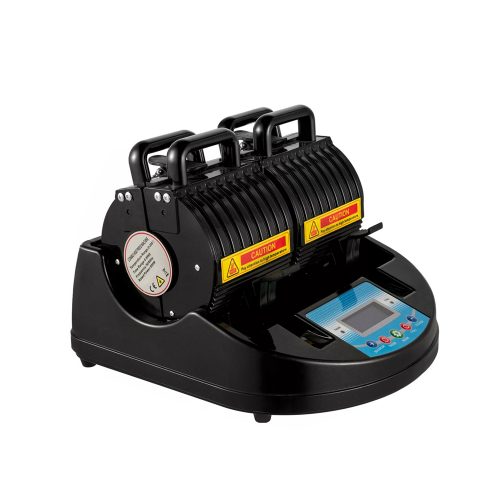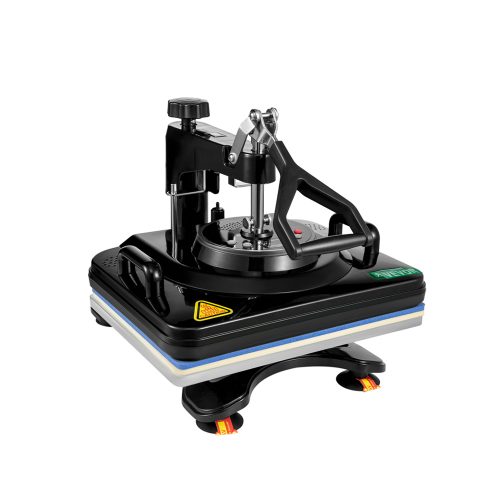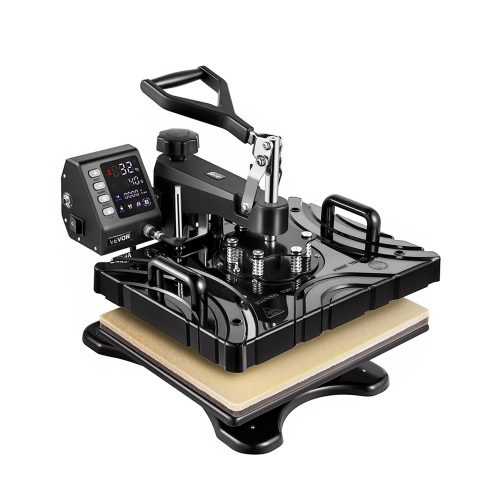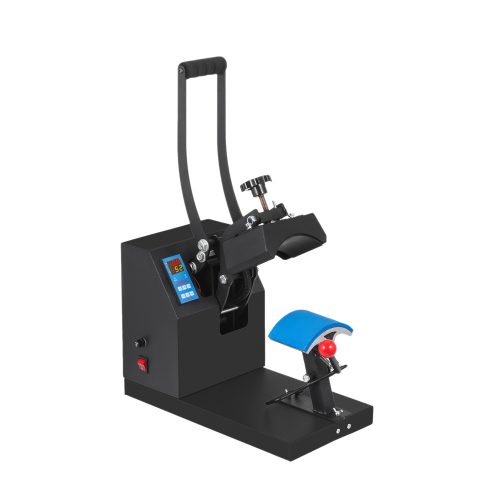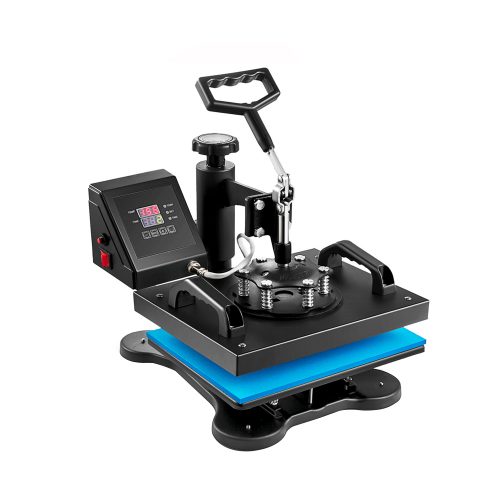BEST HEAT PRESS COLLECTION FOR YOU
While heat presses typically print pictures on fabrics, specially designed heat presses can also print graphics on mugs, plates, puzzles, hats, and so on. 5 in 1 , 8 in 1 , and 6 in 1 heat press are very popular.
Digital technology allows precise control of heat and pressure levels as well as time. The pattern is printed with sublimation ink on sublimation paper, allowing the pattern to be transferred.
- The Best Brands
Monday
Stahls'
VEVOR
Siser
VIVOHOME
HTVRONT
Dulytek
Hotronix
TUSY
Angoo
CO-Z
WOOKRAYS
SHZOND
Vehipa
Nineaccy
AONESY
sopbost
SmarketBuy
corey-z
Fancierstudio
starcraft
Geo Knight
- Clamshell heat press
Take up less space than swing away.
Less involved mechanically.
Cons:
Not easy to layout a t-shirt & transfer it unless the machine opens wide.
Some clamshells operate unevenly & pinch the transfer(pinch effect).
- Swing away heat press
Work more freely
More work room
Less possibility of burning yourself.
Cons:
A bit more space for the swinging platen.
Need to tighten the odd screw.
- Drawer heat press
Plenty of room to lay out your garment.
Safe.
Cons:
Need a bit more space to pull out the bottom level.
Special transfer paper: mousepads, bags, fabrics, etc.
Regular inkjet paper: ceramics, glass, etc.
For ceramic products like tiles or mugs, you have to use sublimation ink.
But for polyester t-shirts, mousepads, you can use dye or pigment inks.
Wide-format printer: fabrics like T-shirts or bags
1. Select a heat press machine
2. Choose material
Print on cotton, polyester, Lycra, nylon, and spandex. These materials are strong enough to withstand heat pressure.
3. Choose the design
Basically, any image can be pressed onto a garment. You should improve your skills in software like Adobe Illustrator or CorelDraw.
4. Prepare the heat press
Once you turn on your heat press, set your temperature. This is usually around 350-375 degrees Fahrenheit.
Next, set the pressure. Thicker materials usually require more pressure, while thinner materials do not.
5. Put your garment
Any creases will result in poor printing. You can use the press to preheat the garment for 5 to 10 seconds to eliminate creases.
6. Transfer the design
Set the timer according to your transfer paper instructions, usually between 10 seconds and 1 minute.
Once the time has passed, open the press and remove the shirt. Peel off the transfer paper while it is still hot.
7. Take care of it
Let your shirt rest for at least 24 hours before washing it.
Don't use strong detergents as they can affect the print.
Avoid a tumble dryer and opt for air-drying instead.
1. Time
The heat press has a digital timer to show the exact time. The manufacturer of each vinyl product will specify the correct time.
2. Temperature
Most irons can reach temperatures of about 400°F. That's hot enough for most HTVs, but you usually don't know what temperature it is. You can't set the iron temperature.
Most heat presses are between 450-500°F. This is hot enough for any heat transfer. You can set the temperature without worrying about it!
3. Pressure
When you press with an iron, it's hard to measure pressure. You can get a better, more consistent pressure with a heat press.
4. Steam iron with holes
Steam irons have holes in the hot plate that can affect the pressure.
5. The pressing area of the irons is tiny
The pressing area of iron is tiny. This means you have to do most heat transfers in stages.
The iron may be too small to apply the heat transfer vinyl easily.
Heat presses have a much larger pressing area (standard size is 15x15 inches).
6. Irons are more likely to burn
Irons are more likely to burn, scorch or leave marks on your clothing.
The manufacturer most likely has a recommended cleaning procedure.
2. EZ Off Heat Press Platen Cleaner
Heat the heat press to about 200 degrees.
Apply a small amount of cleaner to a clean cotton cloth.
Use small circular motions to wipe and remove residue.
3. Chemicals
Bleach can all be used to clean the area in question. Acetone and rubbing alcohol are also effective cleaners.
4. Cook it off
If the cleaners don't work, you can "boil" the substance off the hot press platen. This involves using the extreme heat of the heat press to remove unwanted substances. One disadvantage is that it can take a significant amount of time to work.
- Small sizes
12" x 14"
Benefits:
Quicker
Easy
Portable
Less workspace
Kids to smaller adult-sized shirts
- Medium sizes
15" x 15"
15" x 20"
Benefits:
T-Shirts
Medium size Business
repetitive work
- Large sizes
16" x 24"
20" x 25"
Benefits:
Athletic teams
Large shirts
Oversize hoodies
For sublimation
Polyester: 270° F
Cotton: 380°F
Full Color: 350°F
Glitters: 350°F
Stretch Material: 335°F
Vintage: 350°F
Glow in the Dark Fabrics: 350°F
Stubborn Fabrics: 330°F
Photo Transfer on Light Fabrics: 385°F
Photo Transfer on Dark Fabrics: 356°F
High-Quality Digital Prints: 305°F
Reflective Fabrics: 305°F
Metallic Finish: 320°F
Multi-Purpose Material: 350°F
If you are after the following effect, we recommend you to choose screen printing.
- Simple design
- Bright colors
- High quality and long lasting
- Soft feel
- Simple designs printed on dark materials
- Withstands machine washing
- Large number of orders
Heat transfers (vinyl or digital) are recommended if you are after the following results.
- Small orders
- Three or more colors
- Transfer complex images
- Each transfer pattern needs to be personalized
- Eco-friendly products
- Short-term use

